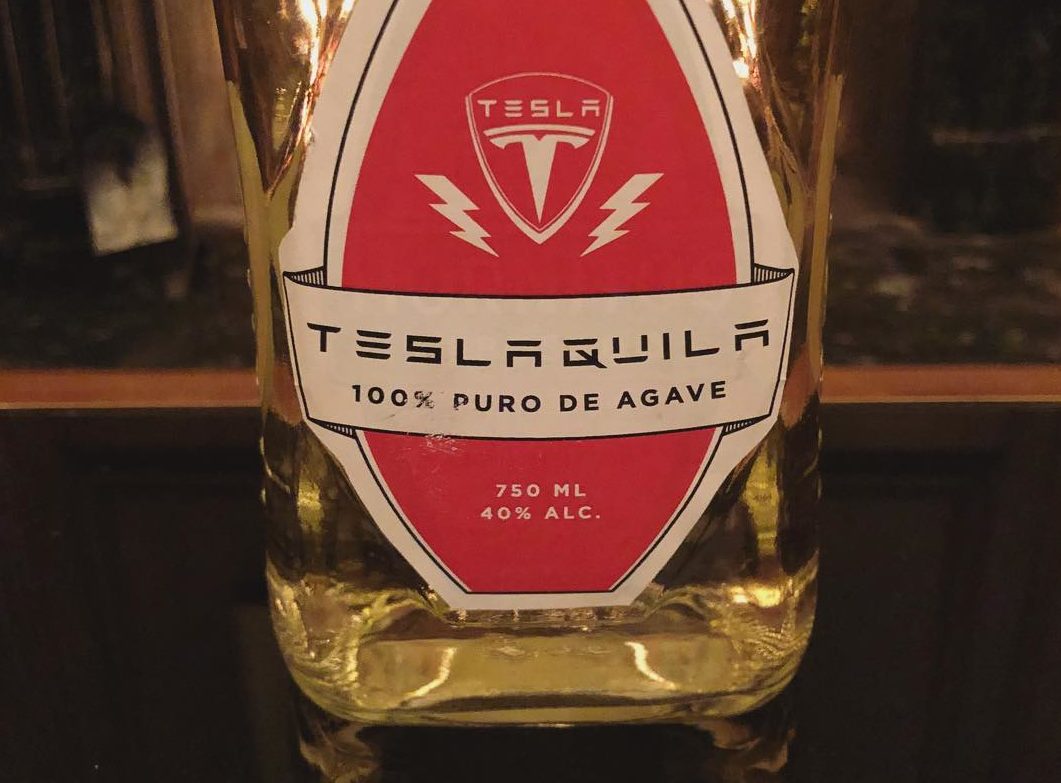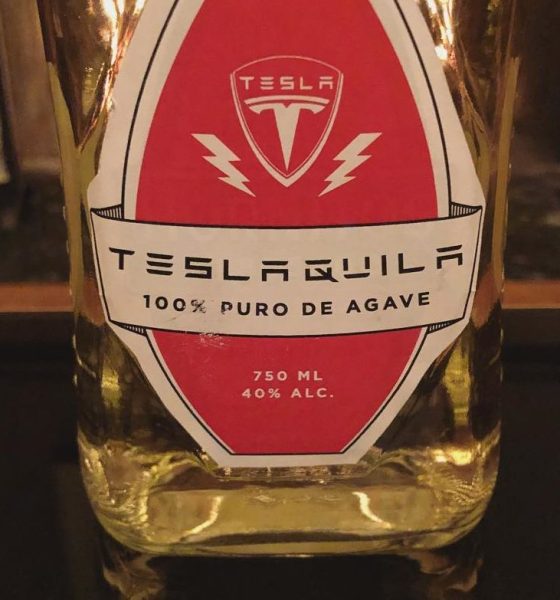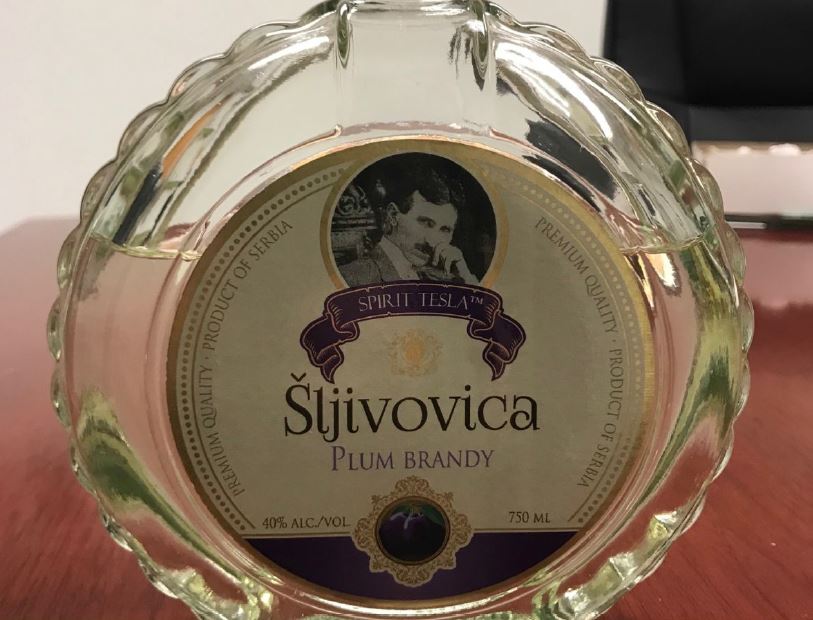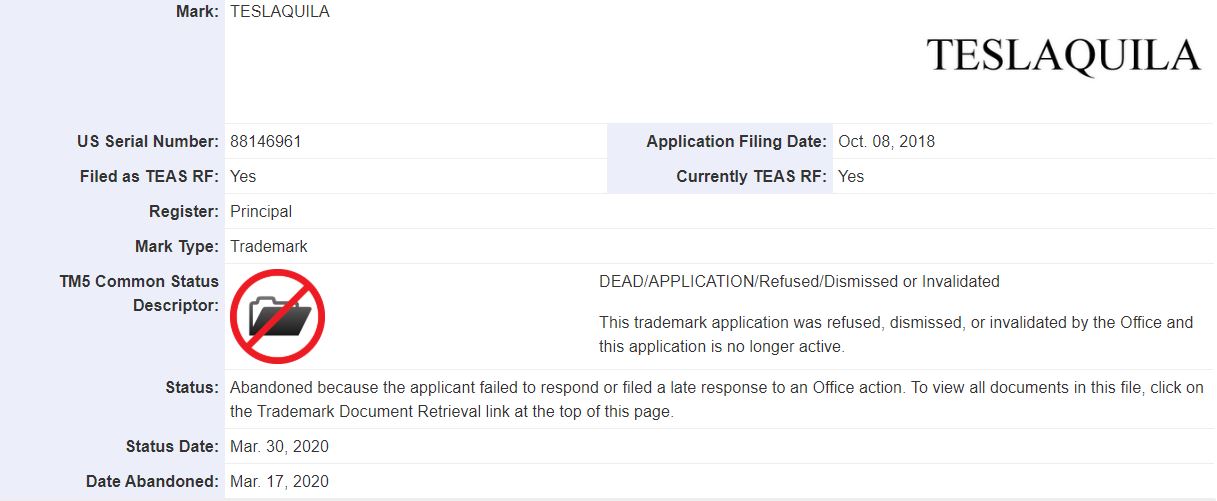

Lifestyle
Tesla abandons ‘Teslaquila’ trademark, opens door to new booze branding
Elon Musk may be promising the market debut of Teslaquila as just around the corner (or many), but whether or not the name will stay the same may be a question thanks to issues with procuring the trademark rights. According to the US Patent and Trademark Office (USPTO), Tesla’s application for the mark was abandoned on March 17, 2020.
The Examiner handling the Teslaquila application at the USPTO refused Tesla’s argument against any similarities with the mark ‘Spirit Tesla,’ a product name used by a Serbian company in connection with plum brandy. Specifically, the word “Tesla” was deemed to be confusing to consumers as it would not be clear that the companies selling both products were unrelated. Tesla replied to the first rejection, arguing that its brand name had become synonymous with their electric vehicles, thus the association would be clear, but the Examiner was not convinced and issued a second rejection.
“In the present case, Applicant’s TESLAQUILA mark is confusingly similar to Registrant’s SPIRIT TESLA mark in terms of appearance, sound, and commercial impression” the Examiner argued. “Here, Applicant’s and Registrant’s marks share the identical term TESLA; thus, they appear and sound identical in part. Because they appear and sound identical in part, these marks are also likely to engender a similar overall commercial impression, namely, that of the electrical engineer and inventor Nikola Tesla…Moreover, please note that when comparing marks, ‘[t]he proper test is not a side-by-side comparison of the marks, but instead whether the marks are sufficiently similar in terms of their commercial impression such that [consumers] who encounter the marks would be likely to assume a connection between the parties.’”


In Tesla’s response, the difference between the two products – one being for agave liquor, the other plum brandy – was also argued as a point against consumer confusion. Unfortunately, the commercial class of goods applied for is the same for both trademarks regardless of liquor type, namely International Class 033. As such, the type of alcohol didn’t give much weight against the legal case the Examiner made. Tesla opted not to respond to the second rejection, thus the application was deemed abandoned after the response period expired.
One of the questions following this news is whether Tesla will proceed with the Teslaquila name without federal trademark protections or rebrand the product altogether. Notably, the all-electric carmaker still has a pending application in Mexico; however, if the mark succeeds in registration, the rights afforded would not apply in the US. The international trademark route also appears to be problematic as another applicant has already filed under the Madrid Protocol for protections in the European Union, Switzerland, New Zealand, Australia, Kazakhstan, the Philippines, and Thailand.
If Tesla has opted to rebrand without announcement, any trademark filings are not yet available in the usual public databases. It may be interesting to note, though, that the company originally filed their Teslaquila mark in Jamaica. This is a move that Apple also uses to hide its upcoming product names as the Jamaica Trademark Office does not have an online search function. Rather, an in-person query is required along with payment of a search fee.
The origin story of Teslaquila involves an April Fool’s joke in 2018 wherein a photo of Musk sleeping up against a Model 3 was posted on his Twitter account, apparently hungover after declaring Tesla’s filing of “all chapters” of bankruptcy, including the fictional “Chapter 14 and a half (the worst one).” A proposed bottle of Teslaquila was later posted on his (now deleted) Instagram account, demonstrating that the CEO was serious about producing the liquor, specifically in 750ml containers at 40% alcohol content.
Regardless of the legal status of Teslaquila in the end, it will always be a good story if not also a good drink.

Lifestyle
Tesla Model S Plaid battles China’s 1500 hp monster Nurburgring monster, with surprising results
There is just something about Tesla’s tuning and refinement that makes raw specs seem not as game-changing.

The Tesla Model S Plaid has been around for some time. Today, it is no longer the world’s quickest four-door electric sedan, nor is it the most powerful. As per a recent video from motoring YouTube channel Carwow, however, it seems like the Model S Plaid is still more than a match for some of its newer and more powerful rivals.
The monster from China
The Xiaomi SU7 Ultra is nothing short of a monster. Just like the Model S Plaid, it features three motors. It also has 1,548 hp and 1,770 Nm of torque. It’s All Wheel Drive and weighs a hefty 2,360 kg. The vehicle, which costs just about the equivalent of £55,000, has been recorded setting an insane 7:04.957 at the Nurburgring, surpassing the previous record held by the Porsche Taycan Turbo GT.
For all intents and purposes, the Model S Plaid looked outgunned in Carwow’s test. The Model S Plaid is no slouch with its three motors that produce 1,020 hp and 1,420 Nm of torque. It’s also a bit lighter at 2,190 kg despite its larger size. However, as the Carwow host pointed out, the Model S Plaid holds a 7:25.231 record in the Nurburgring. Compared to the Xiaomi SU7 Ultra’s record, the Model S Plaid’s lap time is notably slower.
Real-world tests
As could be seen in Carwow’s drag races, however, Tesla’s tech wizardry with the Model S Plaid is still hard to beat. The two vehicles competed in nine races, and the older Model S Plaid actually beat its newer, more powerful counterpart from China several times. At one point in the race, the Xiaomi SU7 Ultra hit its power limit due to its battery’s temperature, but the Model S Plaid was still going strong.
The Model S Plaid was first teased five years ago, in September 2020 during Tesla’s Battery Day. Since then, cars like the Lucid Air Sapphire and the Xiaomi SU7 Ultra have been released, surpassing its specs. But just like the Model Y ended up being the better all-rounder compared to the BYD Sealion 7 and the MG IM6, there is just something about Tesla’s tuning and refinement that makes raw specs seem not as game-changing.
Check out Carwow’s Model S Plaid vs Xiaomi SU7 drag race video below.
Lifestyle
500-mile test proves why Tesla Model Y still humiliates rivals in Europe
On paper, the BYD Sealion 7 and MG IM6 promised standout capabilities against the Model Y.

BYD is seeing a lot of momentum in Europe, so much so that mainstream media has taken every opportunity to argue that the Chinese automaker has beaten Tesla in the region. But while BYD sales this year in Europe are rising and Tesla’s registrations remain challenged, the raw capabilities of vehicles like the Model Y are difficult to deny.
This was highlighted in a 500-mile challenge by What Car? magazine, which showed that the new Tesla Model Y is more efficient, cheaper to run, and more reliable than rivals like the BYD Sealion 7, and even the nearly 400 KW-charging MG IM6.
Range and charging promises
On paper, the BYD Sealion 7 and MG IM6 promised standout capabilities against the Model Y. The Sealion 7 had more estimated range and the IM6 promised significantly faster charging. When faced with real-world conditions, however, it was still the Model Y that proved superior.
During the 500-mile test, the BYD nearly failed to reach a charging stop, arriving with less range than its display projected, as noted in a CarUp report. MG fared better, but its charging speeds never reached its promised nearly-400 kW charging speed. Tesla’s Model Y, by comparison, managed energy calculations precisely and arrived at each stop without issue.
Tesla leads in areas that matter
Charging times from 25% to 80% showed that the MG was the fastest at 17 minutes, while Tesla and BYD were close at 28 and 29 minutes, respectively. Overall efficiency and cost told a different story, however. The Model Y consumed 19.4 kWh per 100 km, compared to 22.2 for MG and 23.9 for BYD. Over the full trip, Tesla’s charging costs totaled just £82 thanks to its supercharger network, far below BYD’s £130 and MG’s £119.
What Car? Magazine’s testers concluded that despite BYD’s rapid sales growth and the MG IM6’s seriously impressive charging speeds, Tesla remains the more compelling real-world choice. The Model Y just offers stability, efficiency, and a proven charging infrastructure through its Supercharging network. And as per the magazine’s hosts, the Model Y is even the cheapest car to own among the three that were tested.
Watch What Car? Magazine’s 500-mile test in the video below.
Lifestyle
Tesla Cybertruck slapped with world’s least intimidating ticket, and it’s pure cringe
One cannot help but cringe and feel second-hand embarrassment at the idea of a person just driving around with a stack of these babies.

A Cybertruck parked at Stanford Shopping Center in California was recently hit with what might be the most try-hard piece of paper ever slipped under a wiper blade: a “fake citation” accusing the driver of supporting a “fascist car.”
The note, shared on X by Tesla staff program manager Ryan Torres, quickly made the rounds on X, where it quickly gained attention as an example of how not to protest.
The world’s least intimidating ticket
According to the citation, the supposed “violation” was “driving a fascist car.” The remedial action? Take the bus, call an Uber, or ride a bike. The note also dubbed Elon Musk a “chainsaw-wielding Nazi billionaire.” Now, protests against Tesla and Elon Musk have become commonplace this year, but one cannot help but cringe and feel second-hand embarrassment at the idea of a person just driving around with a stack of fake anti-Tesla/Musk citations.
Torres pointed out the irony himself in his post on X. Tesla currently employs over 140,000 Americans, and SpaceX has put the U.S. firmly back at the top of space technology. As Torres put it, maybe the person behind the world’s least intimidating ticket should “read a book on innovation before vandalizing” other people’s property.
Peak performative clownery
Not to mention that the fake ticket’s logic collapses under its own weight. EVs like the Cybertruck are literally designed to reduce emissions, not “destroy the economy.” If anything, Tesla has bolstered the United States’ economy by fueling jobs in engineering, manufacturing, and clean energy. It’s not the first time a Tesla has been the target of vandalism or politically charged notes, but this one stands out for sheer cringe value.
Torres summed it up neatly: “Peak clownery.” On that point, at least, the citation earns full marks. In a way, though, perhaps cringe fake tickets are not as bad as the literal firebombs that were being thrown at Tesla stores and cars earlier this year because some critics were gleefully misinformed about Elon Musk.








